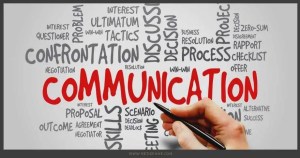
Cognate Strategies in Business Writing
What defines good business writing?
In their book, Designing Visual Language: Strategies for Professional Communicators, Charles Kostelnick and David Roberts (01) discuss 9 cognate strategies in business writing that do justice to the question above. These strategies are a variation of Aristotle’s 3 fundamental elements of rhetoric (02), logos (logic), ethos (ethics and credibility), and pathos(emotion). We shall now discuss 5 of the cognate strategies in business writing.
What are the 3 original cognate strategies?
Clarity
A wonderful message will do little to satisfy the readers if the writer wrote it in terms that are easy to understand. Clarity involves the choice of words and the manner of use. However, it doesn’t leave out the use of illustrations and examples. Every component has to clarify the message, and not lead to confusion.
Example: The last thing we need to complete this prototype is component Z. Immediately after the manufacturer delivers it, work will commence.
Conciseness
This is quite close to the point of clarity. A good business writer can hardly be clear without being concise or vice-versa. Conciseness means a writer passes a message with the right number of words and the right amount of time. It also involves being direct and brief yet in a way that preserves the message’s quality.
Example: The order of the program today is to revise the minutes of the last meeting, answer the new questions, and discuss how to implement the new pattern.
Arrangement
The contents of a writer’s message should be presented in order of hierarchy. A writer should be able to present the information in a way that follows a vivid pattern. Your audience should be able to interpret it accordingly. The link between one point and the next should be obvious to the reader. This proves a writer’s grasp of the subject matter and their ability to communicate it effectively.
Example: Every complaint should be directed to the unit head first. The unit head will take it up with the HR manager, then it will be discussed among the directors.
Credibility
Readers may not know who the writer is, but they will form their perceptions of them in the way a message is presented. It’s up to a writer to ensure that this perception is positive. A writer may need to discuss their insight into a topic, their academic credentials, or how they’ve learned from past experiences.
Example: It’s better to leave them 5 days for enough feedback. Last time, we left 2 days and we constantly had to go back to address these issues.
Reference
Citing the sources of your information as a writer is another way to prove your credibility as a writer. Key features of the message should be referenced to improve the quality of the message. There’s also a need to establish a frame of reference. Sometimes, citing sources may not be as beneficial as an image. For example, in discussing the characteristics of a coffee maker, an image would provide the reader with a perfect frame of reference.
Example: According to the federal bureau of statistics, 1 in 5 houses needs a water dispenser.
Other cognate strategies include expectation, tone, emphasis, and engagement. Indeed, they help to facilitate excellent business writing.
Check the following articles to read more about Cognate Strategies in Business Writing:
- Pearson.com. 2020. Kostelnick & Roberts, Designing Visual Language: Strategies For Professional Communicators (Part Of The Allyn & Bacon Series In Technical Communication), 2Nd Edition | Pearson. Retrieved 29 November 2020 from (URL)
- Plato.stanford.edu. 2020. Aristotle’S Rhetoric (Stanford Encyclopedia Of Philosophy) Retrieved 29 November 2020 from (URL)
- How to Navigate Email Communication Across Time Zones

- Role of Internal Communication Platform in Employee Engagement

- Five Contextual Dimensions of Communication

This article is written by:
This article is written and edited by in-house writers and editors. Knowledge Netizen editorial team is committed to providing accurate and informative content. You can cite our articles under the author name "NetizenMe"

